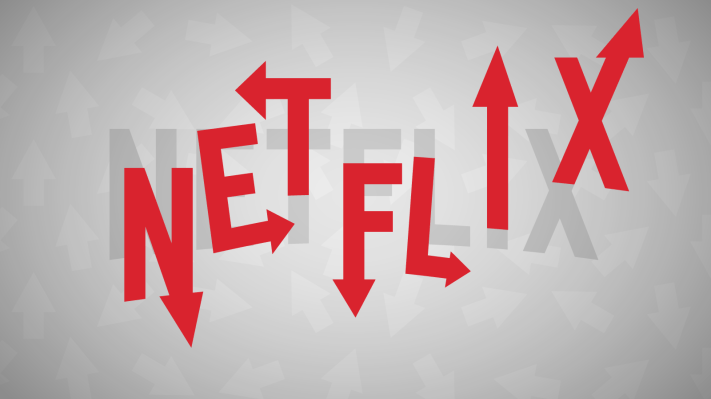Netflix just posted its first-quarter earnings, and it looks like for investors it was a whiff.
The company’s shares are diving more than 10% in extended trading, which more or less fits in with the usual behavior of Netflix — big spikes, up and down, all over the place and all the time. Even the last time the company reported earnings, shares spiked 8%, and we’re seeing that big reaction once again on its first-quarter earnings.
Netflix is just one of those companies, it seems.
[graphiq id=”e87Gc4hRgV” title=”Netflix Inc. (NFLX) Stock Price – 1 Year” width=”600″ height=”492″ url=”https://w.graphiq.com/w/e87Gc4hRgV” link=”http://listings.findthecompany.com/l/16808888/Netflix-Inc-in-Los-Gatos-CA” link_text=””]
So what’s the culprit here? Even though the company added a record number of new subscribers, it looks like its growth isn’t going absolutely bonkers even though the company is expanding to 130 new countries. The company said it would add 2 million new international subscribers in the second quarter, along with 500,000 new U.S. subscribers, after posting a record Q1. There’s an aspect of seasonality here, so it’s definitely not apples to apples, but still: 2.5 million doesn’t seem like a huge number — and especially after adding 3.3 million new streaming members in the second quarter last year.
International expansion is going to be a huge uphill battle, for sure. While international subscribers make up more than 40% of the company’s subscriber base, as it goes to newer countries it’s going to have to find ways to capture local content and fill out a library that culturally fits with the country that it’s growing into. And while it’s investing in a ton of original content, that might not be a good fit for new countries either. Eventually Netflix is going to run out of room to expand in countries that culturally overlap with the U.S., and that’s going to require a different playbook.
But Netflix isn’t the only company that’s offering a huge library of content for a subscription fee. Amazon is offering a standalone video streaming service separate from its Prime subscription, and of course there’s Google Play and iTunes, among other services, that have big libraries of content available.
All this increasing competition and change in market dynamics means Netflix has to continue to show growth and show that its strategy is working. It did that this quarter with a record number of new subscribers, but it has to keep doing that, and show that it’ll be a sustainable public company that can outlast the influence of larger companies that treat video streaming as just one part of their empires.
Are these extended libraries of content becoming more and more commoditized? Perhaps. And that may be part of the reason why the company is betting so much on original content, which will in theory help persuade people to go with Netflix instead of Amazon. As time goes on, that’s what’s going to be the differentiating factor between these services.
These dynamics are in play increasingly in newer markets. As time goes on, even music streaming is becoming commoditized, for example, with Apple releasing Apple Music and sparring with Pandora. They both stream music and have similarly large libraries, so Pandora has to show it can differentiate itself from Apple — and meanwhile Apple is securing huge exclusives, like Taylor Swift’s new concert documentary. Whether Pandora can be a growing, independent publicly traded company is now a huge question for the service.
Is Netflix’s strategy working as it faces increasing competition from behemoths? That, like Pandora, is a big question for the company. And for the $46.4 billion dollar company that just shaved off a tenth of its value, it’s one that it seems like it doesn’t have an answer to today.
